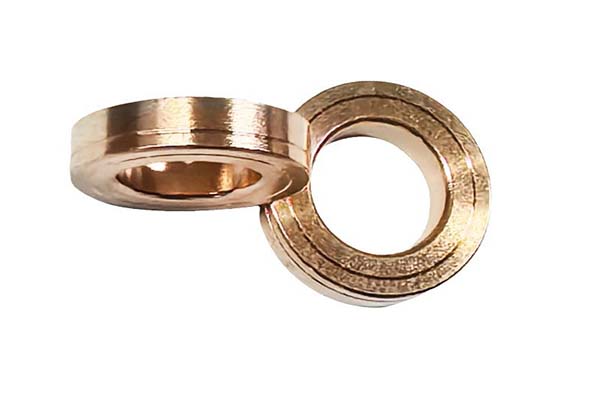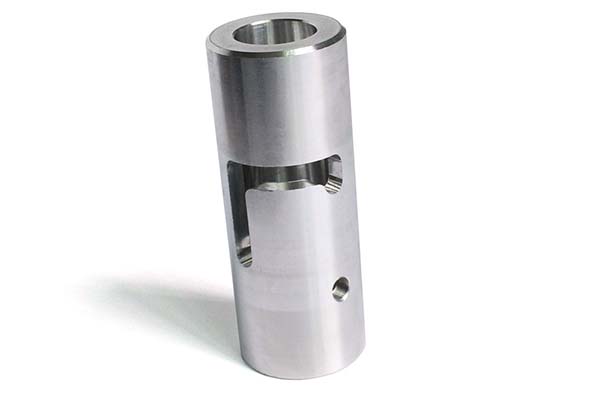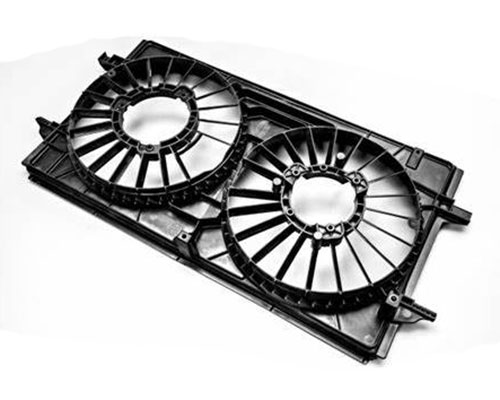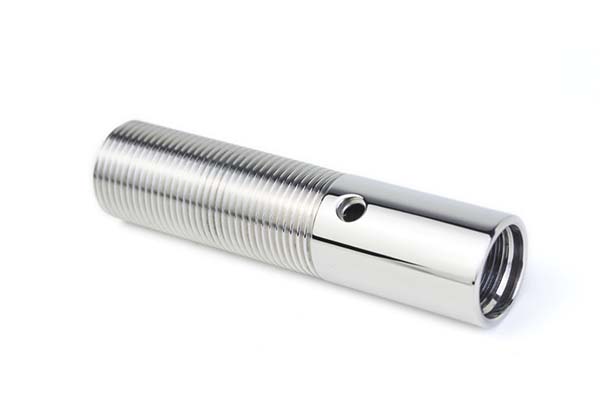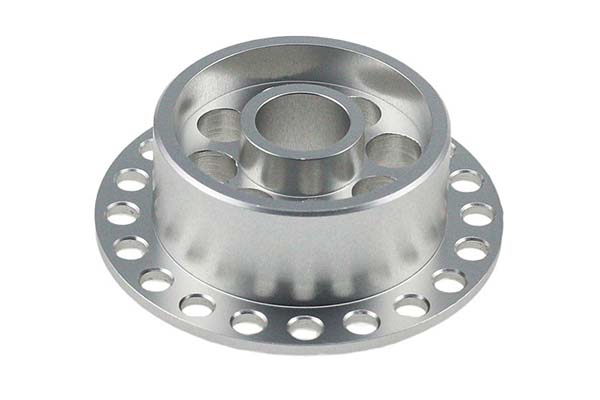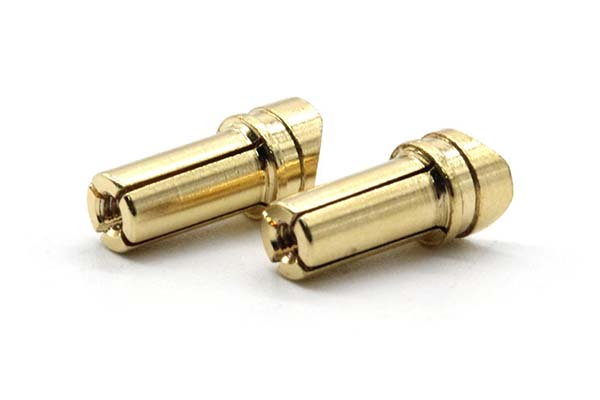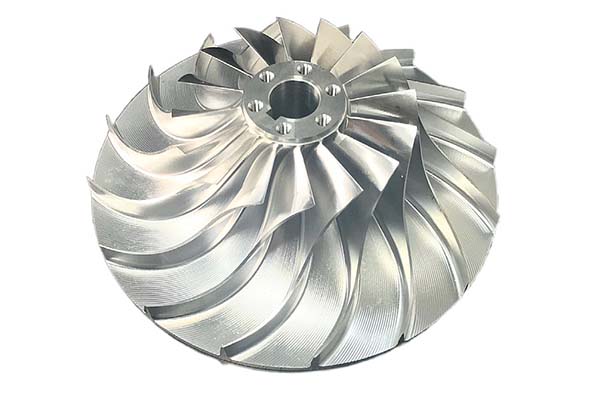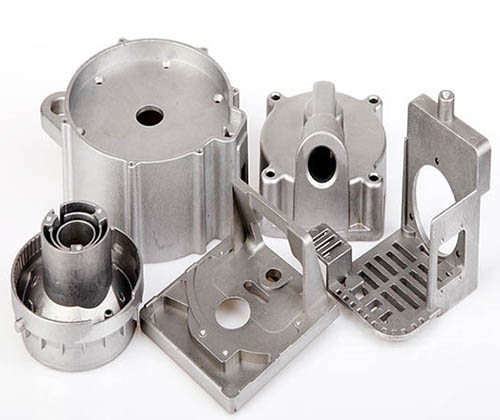In the fast-paced world of product development, getting a prototype right is crucial. Whether you're in the automotive, aerospace, medical, or consumer goods industry, the prototype stage can make or break a product. Traditional prototyping methods often come with their own set of challenges. Manual crafting might be time-consuming and lack precision, while injection molding can be costly for small batches. This is where Computer Numerical Control (CNC) prototyping steps in as a game-changer. But what exactly makes CNC prototyping so effective, and how does it stack up against other methods? Let's dive in.
1. CNC Prototyping Technology
1.1 The Basics of CNC Machining
CNC machining is a manufacturing process that uses computer-controlled machines to cut, shape, and form materials into desired parts. It all starts with a digital design created using Computer-Aided Design (CAD) software. This design is then translated into a set of instructions that the CNC machine can understand, a process facilitated by Computer-Aided Manufacturing (CAM) software. The machine follows these instructions precisely, removing material layer by layer to create the prototype.
For example, a complex automotive part with intricate curves and precise dimensions can be accurately reproduced using CNC machining. The machine's ability to follow programmed toolpaths ensures that each cut is made with utmost precision, something that would be extremely difficult to achieve manually.
1.2 Precision Engineering and Toolpath Generation
One of the key aspects of CNC prototyping technology is precision. CNC machines can achieve tolerances as low as ±0.01 mm in some cases. This high level of precision is due to the accurate toolpath generation. The CAM software calculates the optimal toolpath based on the CAD design, taking into account factors such as the type of material, the cutting tool being used, and the desired surface finish.
Automation also plays a significant role. Once the program is set, the CNC machine can operate continuously with minimal human intervention. This not only reduces the risk of human error but also ensures consistency in the production of multiple prototypes.
2. Applications of CNC Prototyping
2.1 Automotive Industry
In the automotive industry, CNC prototyping is widely used for developing new engine components, chassis parts, and interior components. For instance, when designing a new engine block, CNC machining can create prototypes with the exact specifications required for performance testing. This allows automotive engineers to test the functionality of the part before committing to mass production, saving both time and cost in the long run.
2.2 Aerospace Parts
Aerospace components demand the highest level of precision and quality. CNC prototyping is used to create parts such as turbine blades, aircraft brackets, and landing gear components. The ability to produce complex geometries with tight tolerances makes CNC machining ideal for aerospace applications. A single turbine blade in a jet engine, which has a very intricate shape, can be accurately prototyped using CNC technology to ensure optimal performance.
2.3 Medical Devices
Medical devices require extreme precision and biocompatibility. CNC prototyping is used to create prototypes of surgical instruments, implantable devices, and diagnostic equipment. For example, a custom orthopedic implant can be CNC machined from a biocompatible material like titanium, ensuring a perfect fit for the patient.
2.4 Electronics Casings and Consumer Products
CNC machining is also popular for creating electronics casings and consumer products. It can produce casings with precise cutouts for buttons, ports, and displays. In the consumer products industry, items such as high-end watches or smartphone accessories can be prototyped using CNC to achieve a high-quality finish and precise dimensions.
3. Materials for CNC Prototyping
3.1 Metals
3.1.1 Aluminum
Aluminum is a popular choice for CNC prototyping due to its excellent machinability, lightweight nature, and relatively low cost. It is often used in applications where weight is a concern, such as in the aerospace and automotive industries. Aluminum prototypes can be easily machined to achieve a smooth surface finish, making it suitable for both functional and aesthetic testing.
3.1.2 Stainless Steel
Stainless steel is preferred when strength, durability, and corrosion resistance are required. It is commonly used in medical devices, industrial equipment, and food processing machinery. CNC machining can handle stainless steel effectively, creating parts with high precision, although it may require more powerful cutting tools due to the material's hardness.
3.2 Plastics
3.2.1 ABS
Acrylonitrile Butadiene Styrene (ABS) is a widely used plastic in CNC prototyping. It is easy to machine, has good dimensional stability, and can be painted or finished to achieve different looks. ABS is often used for creating prototypes of consumer products, electronics enclosures, and models for visual inspection.
3.2.2 PEEK
Polyether Ether Ketone (PEEK) is a high-performance plastic known for its excellent chemical resistance, high temperature tolerance, and mechanical strength. It is used in applications where extreme conditions are expected, such as in aerospace and medical implant prototypes. However, machining PEEK requires specialized tools and techniques due to its high melting point and toughness.
3.3 Other Materials
Materials like wood and acrylic are also used in CNC prototyping. Wood can be used to create decorative prototypes or models, while acrylic is popular for creating clear or transparent prototypes, such as display cases or optical components. Composite materials, which combine two or more different materials, are also being increasingly used in CNC prototyping to achieve specific properties, like high strength-to-weight ratios.
4. Advantages and Disadvantages of CNC Prototyping
4.1 Advantages
4.1.1 High Precision
As mentioned earlier, CNC machines can achieve extremely high precision, which is crucial for applications where even small deviations can lead to significant problems. This high precision ensures that the prototype closely matches the final product design, reducing the need for extensive rework during the development process.
4.1.2 Consistency
Automation in CNC machining results in consistent production. Once the program is set, each prototype produced will have the same dimensions and quality, regardless of how many are made. This is particularly important for industries where standardization is key, such as in the manufacturing of replacement parts.
4.1.3 Complex Geometries
CNC machines can handle complex geometries with ease. Features such as undercuts, internal cavities, and intricate patterns can be machined accurately, providing designers with greater freedom to create innovative products. This is a significant advantage over many other prototyping methods.
4.1.4 Cost - Effectiveness for Small Batches
For small - batch production, CNC prototyping can be cost - effective. While the initial setup costs may be high, the cost per unit can be reasonable compared to methods like injection molding, which require expensive tooling for each new design.
4.2 Disadvantages
4.2.1 High Setup Costs
Setting up a CNC machine for a new prototype requires time and resources. The process involves programming the machine, selecting the appropriate cutting tools, and setting the correct machining parameters. This can be a costly and time - consuming process, especially for one - off prototypes.
4.2.2 Material Waste
CNC machining is a subtractive manufacturing process, which means it removes material from a larger block to create the desired shape. This often results in material waste, especially when machining complex parts. Some materials, especially high - cost ones like certain metals, can make this waste a significant cost factor.
4.2.3 Limited Material Options
Although CNC machining can work with a wide range of materials, there are still some limitations. Some exotic or newly developed materials may be difficult or impossible to machine using CNC methods. Additionally, the machining characteristics of a material can vary widely, and not all materials are well - suited for CNC prototyping.
5. CNC Prototyping vs. Other Prototyping Methods
5.1 CNC Prototyping vs. 3D Printing
5.1.1 Speed
3D printing is often faster for creating simple prototypes, especially when the design is highly geometric and can be printed in one piece. However, for complex parts that require multiple assemblies or post - processing, CNC prototyping may be faster as it can machine the part in one operation in some cases.
5.1.2 Cost - Effectiveness
For small, simple parts, 3D printing can be more cost - effective due to lower material costs and no need for expensive tooling. But for larger or more complex parts, CNC prototyping may offer better cost - effectiveness, especially when considering the quality and material properties required.
5.1.3 Surface Finish
CNC - machined parts typically have a better surface finish compared to 3D - printed parts, especially those printed using filament - based 3D printers. 3D - printed parts may have visible layer lines that require additional post - processing to smooth out, while CNC - machined parts can achieve a smooth finish directly from the machine in many cases.
5.1.4 Material Properties
CNC - machined parts generally have better mechanical properties as the material is cut from a solid block, maintaining its integrity. 3D - printed parts may have anisotropic properties due to the layer - by - layer construction, which can affect their performance in some applications.
5.2 CNC Prototyping vs. Injection Molding
5.2.1 Cost
Injection molding is highly cost - effective for large - volume production, but the initial tooling costs are extremely high. CNC prototyping is more suitable for small - batch production or when design changes are likely, as it has lower upfront costs.
5.2.2 Design Flexibility
CNC prototyping offers greater design flexibility as it can handle complex geometries without the need for complex mold designs. Injection molding requires molds to be designed and fabricated, which can limit design changes once the mold is made.
5.2.3 Lead Time
CNC prototyping usually has a shorter lead time, especially for one - off or small - batch prototypes. Injection molding requires time for mold design, fabrication, and testing before production can start, which can result in longer lead times.
5.3 CNC Prototyping vs. Hand Crafting
5.3.1 Precision
CNC prototyping far exceeds hand crafting in terms of precision. Hand - crafted prototypes may vary in dimensions and quality, while CNC - machined prototypes are highly consistent and accurate.
5.3.2 Production Time
Hand crafting can be very time - consuming, especially for complex parts. CNC prototyping can produce parts much faster, especially when the machine is programmed efficiently.
5.3.3 Cost for Quantity
For a single prototype, hand crafting may be cost - effective if the skills are readily available. However, for multiple prototypes, CNC prototyping becomes more cost - effective due to its ability to produce consistent parts with less labor input.
6. CNC Prototyping Equipment
6.1 Milling Machines
Milling machines are one of the most common types of CNC equipment used in prototyping. They use rotary cutters to remove material from the workpiece, creating a variety of shapes. Vertical milling machines are often used for machining flat surfaces, drilling holes, and creating pockets, while horizontal milling machines are better suited for machining long, cylindrical parts.
6.2 Lathes
CNC lathes are used to machine cylindrical parts. The workpiece rotates on an axis while cutting tools remove material to create the desired shape. Lathes can be used to create parts such as shafts, bushings, and screws with high precision.
6.3 Routers
CNC routers are similar to milling machines but are often used for softer materials like wood, plastics, and foam. They are used to create detailed shapes, carve designs, and cut out parts. Routers are popular in the furniture, signage, and model - making industries.
6.4 Plasma Cutters and Laser Cutters
Plasma cutters use a high - velocity jet of ionized gas (plasma) to cut through metal. They are often used for cutting large sheets of metal into specific shapes. Laser cutters, on the other hand, use a high - powered laser beam to cut or engrave materials. They can be used for a variety of materials, including metals, plastics, and wood, and are known for their ability to create precise cuts and detailed patterns.
6.5 CNC Controllers
The CNC controller is the brain of the CNC machine. It interprets the instructions from the CAM software and controls the movement of the machine's axes, spindle speed, and other functions. Modern CNC controllers are highly advanced, with features such as touch - screen interfaces, real - time monitoring, and the ability to store and run multiple programs.
Yigu Technology, as a plastic metal parts custom manufacturing supplier, understands the significance of CNC prototyping. With our experience, we know that CNC prototyping offers unparalleled precision, which is crucial for plastic and metal parts. The ability to work with a variety of materials, from common plastics to high - grade metals, allows us to meet diverse client needs. We also recognize the importance of minimizing material waste and optimizing the prototyping process. Our team of experts is well - versed in programming CNC machines to ensure efficient production. By leveraging CNC prototyping technology, we can provide our clients with high - quality prototypes in a timely manner, enabling them to move forward with their product development smoothly.
FAQs
1. What is the typical lead time for CNC prototyping?
The lead time for CNC prototyping depends on several factors, including the complexity of the design, the type of material, and the availability of the machine. For a simple part made from a common material, it could take as little as a few days. However, for a complex part with tight tolerances and a less common material, it could take up to a few weeks.
2. Can CNC prototyping be used for large - scale production?
While CNC prototyping is more commonly associated with small - batch production and prototyping, it can be used for large - scale production in some cases. However, for very high - volume production, other methods like injection molding may be more cost - effective. CNC machining can be a good option for large - scale production when the parts have complex geometries or when design changes are likely during the production run.
3. How do I choose the right material for my CNC prototype?
When choosing a material for your CNC prototype, consider factors such as the intended use of the final product, the required mechanical properties (such as strength, flexibility, and heat resistance), the desired surface finish, and cost. If the prototype is for a functional test in a high - stress environment, a strong metal like stainless steel may be appropriate. If it's for a visual or ergonomic test, a plastic like ABS could be a better choice. Also, take into account the machinability of the material, as some materials are more difficult to machine than others.
